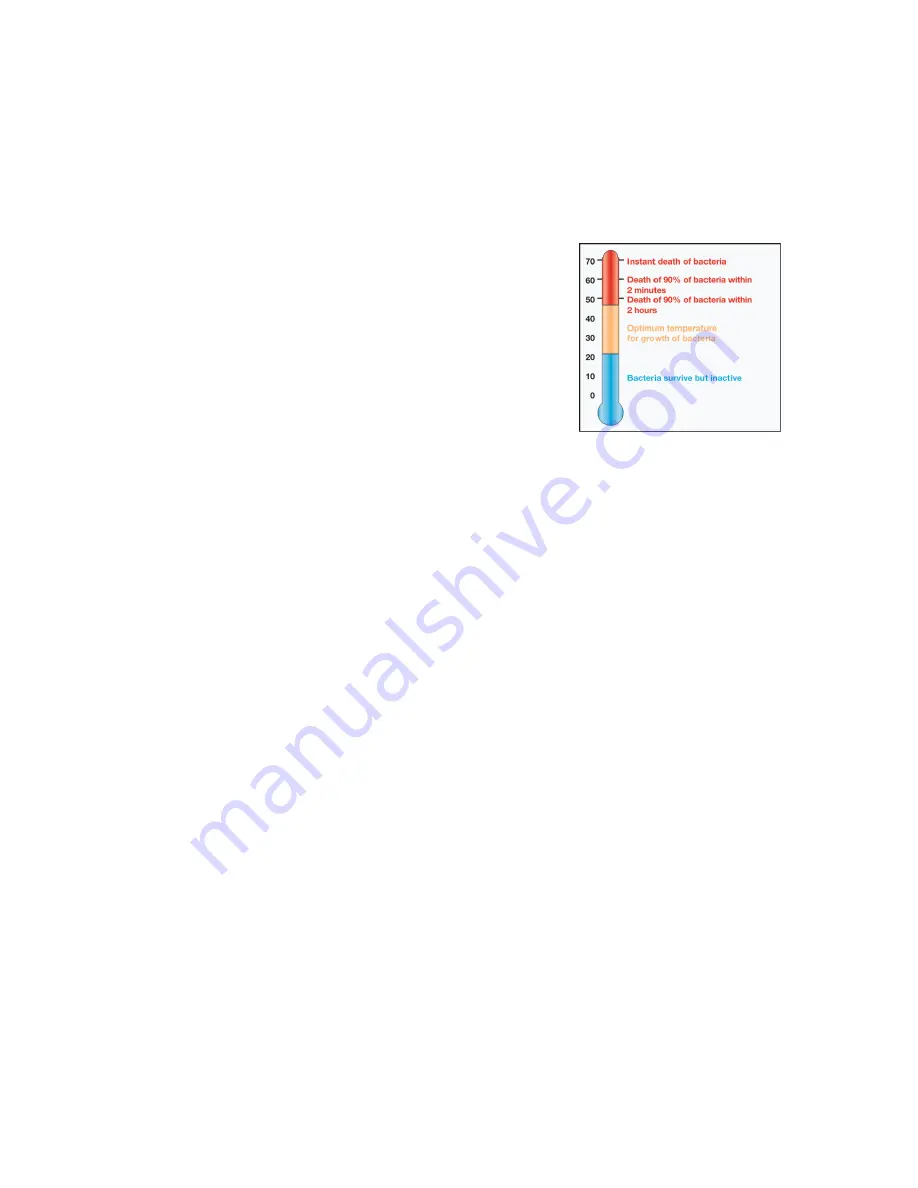
29
THERMAL DISINFECTION
If decontamination of the warm water system is required following detection of Legionella in a water
sample, the entire warm water system including all pipes and fittings including TMVs, taps and
shower heads must be sanitised by heat. Note: alternatives such as chlorination, chlorine dioxide,
ozone and other chemical options may be used for disinfection but are not detailed in this
procedure.
The drawing alongside shows the behaviour of Legionella
Pneumophila bacteria as the conditions vary in the temperature of
the water containing the bacteria, in laboratory cultures. To ensure
correct thermal disinfection, it is necessary to go up to values of no
less than 60°C, or as specified by local state regulations.
The ability to thermally disinfect the system is built into the unit.
Thermal disinfection is generally performed at times of reduced use of the system, for example at
night time; this is to minimize the risk of users getting scalded.
Test points are located in the cold water inlet manifold (also the warm return), hot water inlet
manifold and warm water outlet manifold and provide convenient temperature measurement
points. Gauges are also available as a guide, however, a digital thermometer complying with
AS4032.3 must be used to confirm the measured temperatures.
Note for systems with UV Sterilisation
: Before increasing the temperature of the warm water
plumbing the UV sterilisation must be turned OFF, or alternatively isolate the UV chamber and use
the UV bypass line. Failure to do so can significantly shorten the life of the UV lamp and risk the
integrity of the UV sterilisation.
DANGER - During heat sanitation hot water at scalding temperatures will be delivered to the warm
water outlets. Warm water outlets must not be used whilst heat sanitation is taking place, except as
detailed in this procedure.
It is vitally important that all water outlets are tagged or locked out
during thermal sanitation to reduce the risk of scalding.
Procedure;
1.
Increase the temperature of hot water plant and ensure the warm water ring main circulator
is turned on.
2.
Insert a suitable digital thermometer into the cold water inlet test point and the hot water
inlet test point.
3.
Open the hot water bypass line and isolate the main cold water inlet supply
4.
Monitor the temperature at the warm water return temperature gauge in the warm water
unit. When the temperature has reached the sanitation temperature (recommended at least
70°C), allow the water to recirculate for 30 minutes.
Содержание tempermate
Страница 2: ...2...
Страница 8: ...8 WARM WATER COMPONENTS...
Страница 9: ...9 DIMENSIONS...
Страница 20: ...20 TMV FAULT FINDING...
Страница 42: ...42...





























